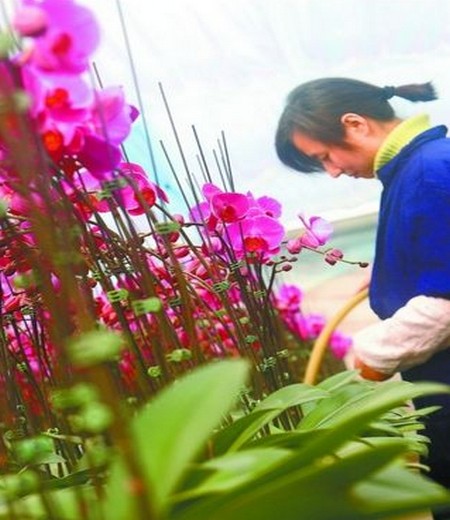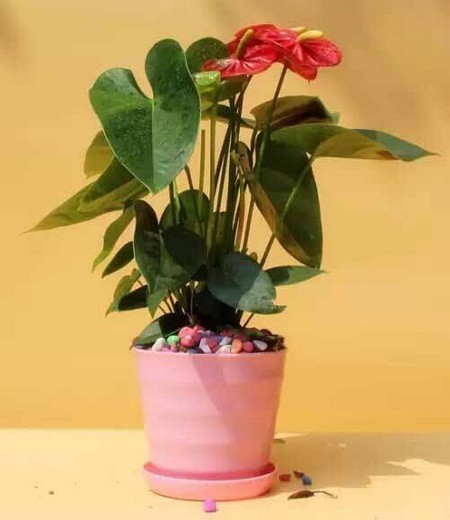Culture method of Bedanhua
The other shore flower is not only beautiful in appearance, but also has high medicinal value. It is deeply loved by flower and tree breeders. Before raising the other shore flower, it is necessary to understand the growth habits of the other shore flower. Besides seed reproduction, the other shore flower can also use its bulb to reproduce.
First of all, it is necessary to adapt to the market and choose the female parent with good flower shape and appearance, peel off the small stem around the female parent bulb for reproduction, then trim off the residual root of the female parent, and the small stem can be planted with soil after the wound heals. If it is a pot plant, the top of the corm should be exposed to the soil, do not plant too deep, or it will cause new buds to be difficult to unearth. The culture soil should be mixed with peat soil, garden soil and perlite in the ratio of 2: 2: 1, preferably slightly acidic.

Keep the soil slightly moist after planting, pursue thin cake fertilizer every half a month in the growing season to avoid direct sunlight, pay attention to stop fertilizer during dormancy and overwintering, so as not to grow on the other side, the most suitable temperature for growth is about 24 ℃, near flowering to keep flowers moist, and appropriate application of flower fertilizer, to promote more neat and beautiful flowering.
The other shore flower is wild on shady hillsides and stream ditches; courtyards are also cultivated. The other side flower is born in red soil, so it has strong cold tolerance, likes shade, and the limit of high temperature it can endure is 24 ℃; it likes moist and drought-resistant, and is used to slightly acidic soil, and the loose and fertile humus soil is the best. Have the habit of summer dormancy.
Lycoris has strong adaptability and cold tolerance. The soil is not strict, it is better to have humus-rich soil and wet and well-drained environment, and the pH value is between 6 and 7. In nature, it is often wild in places such as gentle slope forest edge, stream edge, etc., where it is moist and well drained. It can also grow in a slightly deeper layer of rock crevice at the top of the hills and mountains.
The planting depth of the other shore flower should not be too deep, and the top of the bulb should be just buried in the soil. The soil quality requires sandy soil or loose cultivated soil with good drainage. During the vegetative growth period, water should be often irrigated, and an appropriate amount of water must be supplied from 20 days before flowering to the flowering stage, so as to achieve neat and consistent flowering, and the flowers are easy to maintain. Keep the soil moist, but do not accumulate water to prevent the bulbs from rotting.
The culture method of the other shore flower:
The breeding method of the other shore flower is very simple, peeling off the bulbs around the main bulb of the other bank flower to propagate. Trim the residual root of the cue ball and plant it after the wound is dry.
Potted plant choose to grow for 3 years, can blossom big ball (diameter is in 7 centimeters above) potted plant, can plant a ball. It should be planted shallowly, so that the 1 stroke of the ball resides on the soil surface. Water the soil once after putting on the basin to make the soil slightly moist. Wait for the new leaves to be watered. Liquid fertilizer was applied once every half month. Wait for 2 ~ 3 months, after budding, and then turn the basin or change the basin soil.
Watering should be less in summer dormant period, and basin soil should be kept moist in spring and autumn. Sparse pancake fertilizer and water were applied every half month during the growing season. Garlic likes semi-shade, avoid direct sunlight in summer, maintain semi-shady place in spring and autumn, strictly control watering and stop fertilization during overwintering.
Common pests are: Spodoptera litura, Lycoris radiata, thrips, grubs. Post-anthesis treatment and pest control Lycoris should cut off the scape after flowering in order to reduce the loss of nutrients.
Time: 2019-06-01 Click:
- Prev

Maintenance skills of family potted butterfly orchid during flowering period
Phalaenopsis culture in the process of widespread loss of buds, and even apoptosis, in fact, Phalaenopsis is not a short-lived plant, pay attention to some maintenance details can prolong the flowering period. It is common for Phalaenopsis to drop its bud, of course, some are caused by technological problems in tissue culture, environmental pollution, mechanical damage and so on.
- Next

Culture methods and matters needing attention of potted Anthurium andraeanum
How to raise Anthurium andraeanum? What are the breeding methods and matters needing attention of Anthurium andraeanum? Friends who like to cultivate Anthurium andraeanum will first have such doubts. We need to note that among all flowers, Anthurium andraeanum is very sensitive to salt. The shape of Anthurium andraeanum is unique, the leaves are emerald and green, and the fiery red inflorescences are on it.
Related
- Fuxing push coffee new agricultural production and marketing class: lack of small-scale processing plants
- Jujube rice field leisure farm deep ploughing Yilan for five years to create a space for organic food and play
- Nongyu Farm-A trial of organic papaya for brave women with advanced technology
- Four points for attention in the prevention and control of diseases and insect pests of edible fungi
- How to add nutrient solution to Edible Fungi
- Is there any good way to control edible fungus mites?
- Open Inoculation Technology of Edible Fungi
- Is there any clever way to use fertilizer for edible fungus in winter?
- What agents are used to kill the pathogens of edible fungi in the mushroom shed?
- Rapid drying of Edible Fungi

